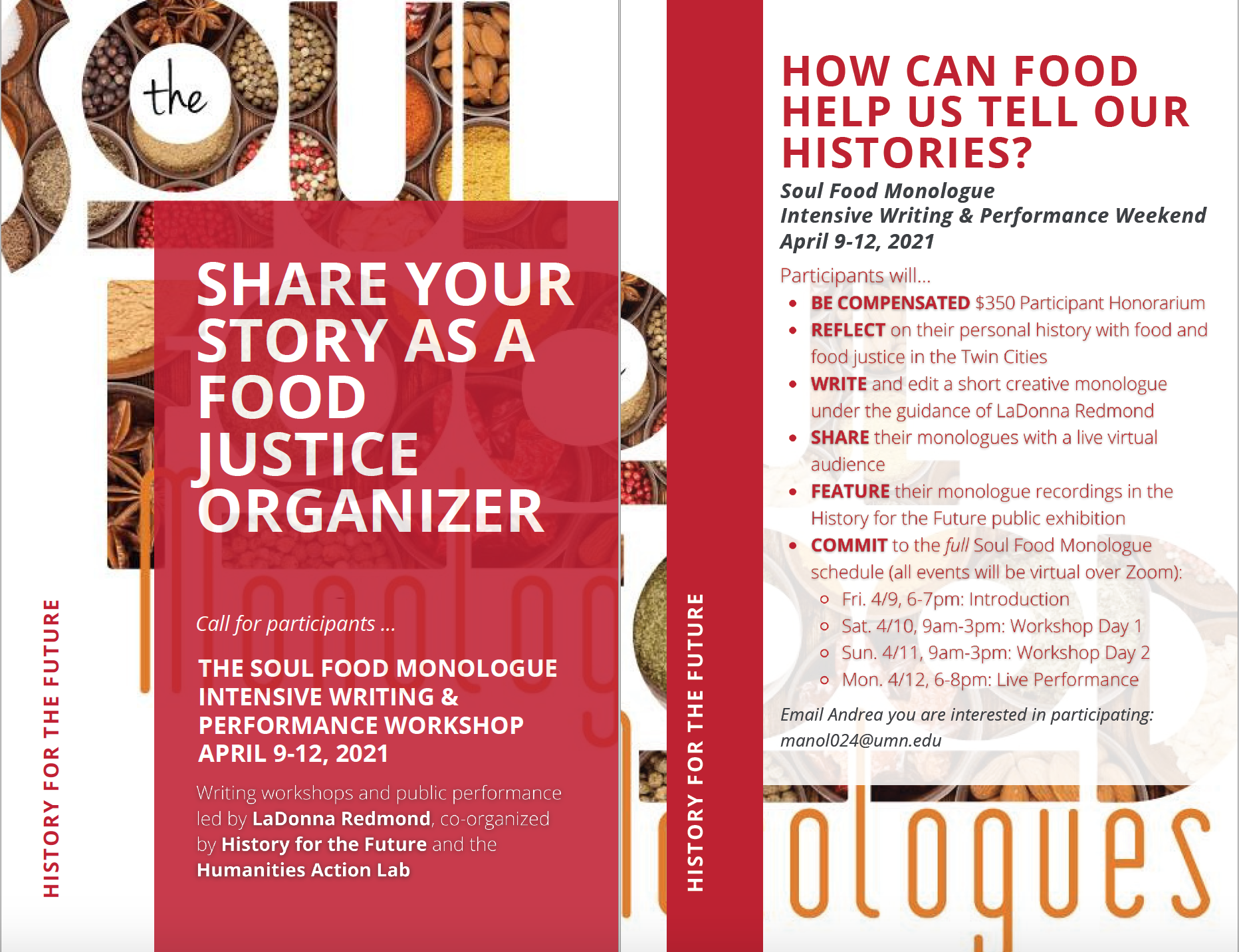
History for the Future: The Story of Community Care in the Twin Cities
HOW CAN THE HISTORY OF MUTUAL AID HELP US IMAGINE RADICAL FUTURES OF COMMUNITY CARE?
I am co-creative director of the local public history initiative titled, History for the Future, which aims to explore histories of mutual aid in the Twin Cities, and to ask how past and present day mutual aid work can help us imagine radical futures. Site-specific historical research will lay the foundation for a broader analysis of mutual aid organizing. These histories will be placed alongside exhibition content created by residents of Minneapolis and Saint Paul through a series of free public programs scheduled from October, 2020 through May, 2021. As a community based public history initiative, archival materials will provide the basis of dialogue and generative knowledge sharing at the public programs, where participants will collectively respond to the lessons and limitations of the archives, and envision radical futures through art, writing, and digital media. Local historians, artists, educators, and organizers will be paid to lead programs including: archival exploration, zine making, local history workshops, youth photography, and monologues.
Image credit: Chandan Khannan, 2020.
During the uprisings in the wake of the murder of George Floyd and in the midst of escalating economic impacts of COVID-19 a blossoming of mutual aid practices, networks, and visions grew across the Twin Cities. During the summer of 2020, my colleagues within the University of Minnesota’s Heritage Studies and Public History program and the Minnesota Youth Story Squad conducted oral history interviews to document community responses to crises. History for the Future emerged from efforts to situate present day mutual aid organizing in the Twin Cities into longer histories of community care, political activism, and the ongoing work of building radical futures.
The vision for the art, writing, dialogue and digital media generated through six public programs is to collectively constitute the materials and ideas in an outdoor exhibition. This exhibition will be temporarily placed in a community lot operated by the independent bookstore in South Minneapolis, Moon Palace Books, in May 2021. The exhibit will be intentionally placed against and in tension with the space occupied by the former Third Precinct of the Minneapolis Police Department.
Public Program Flyers
















